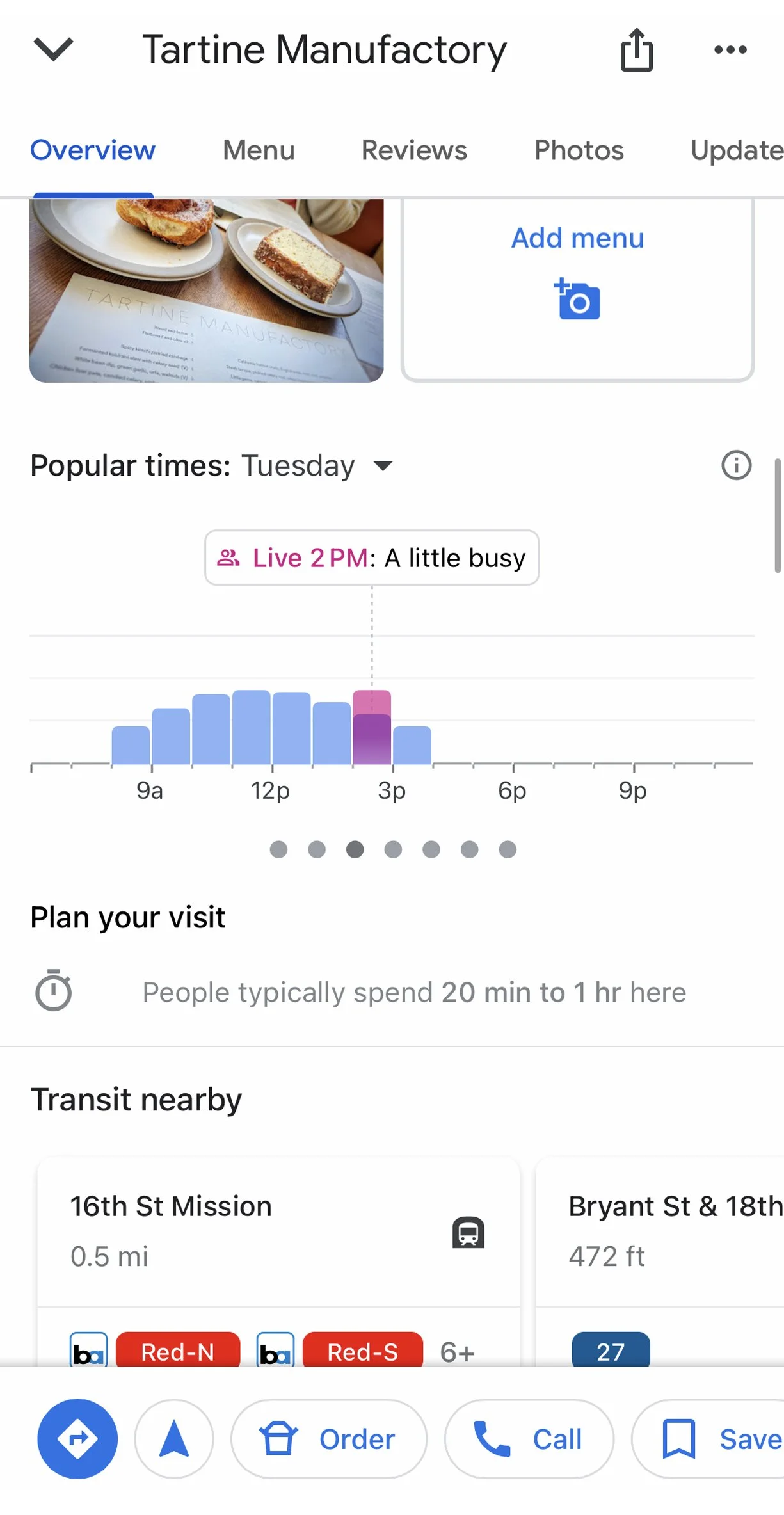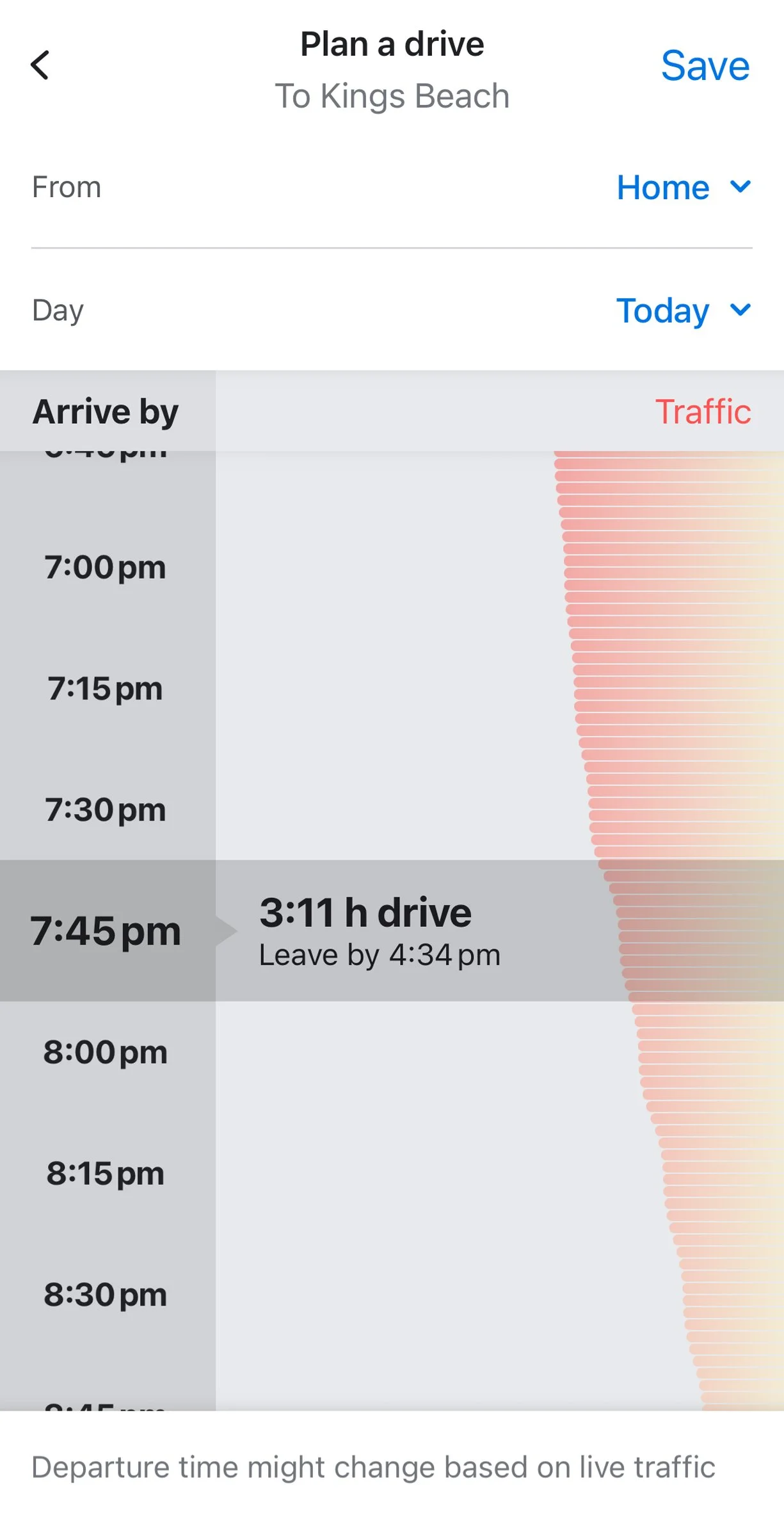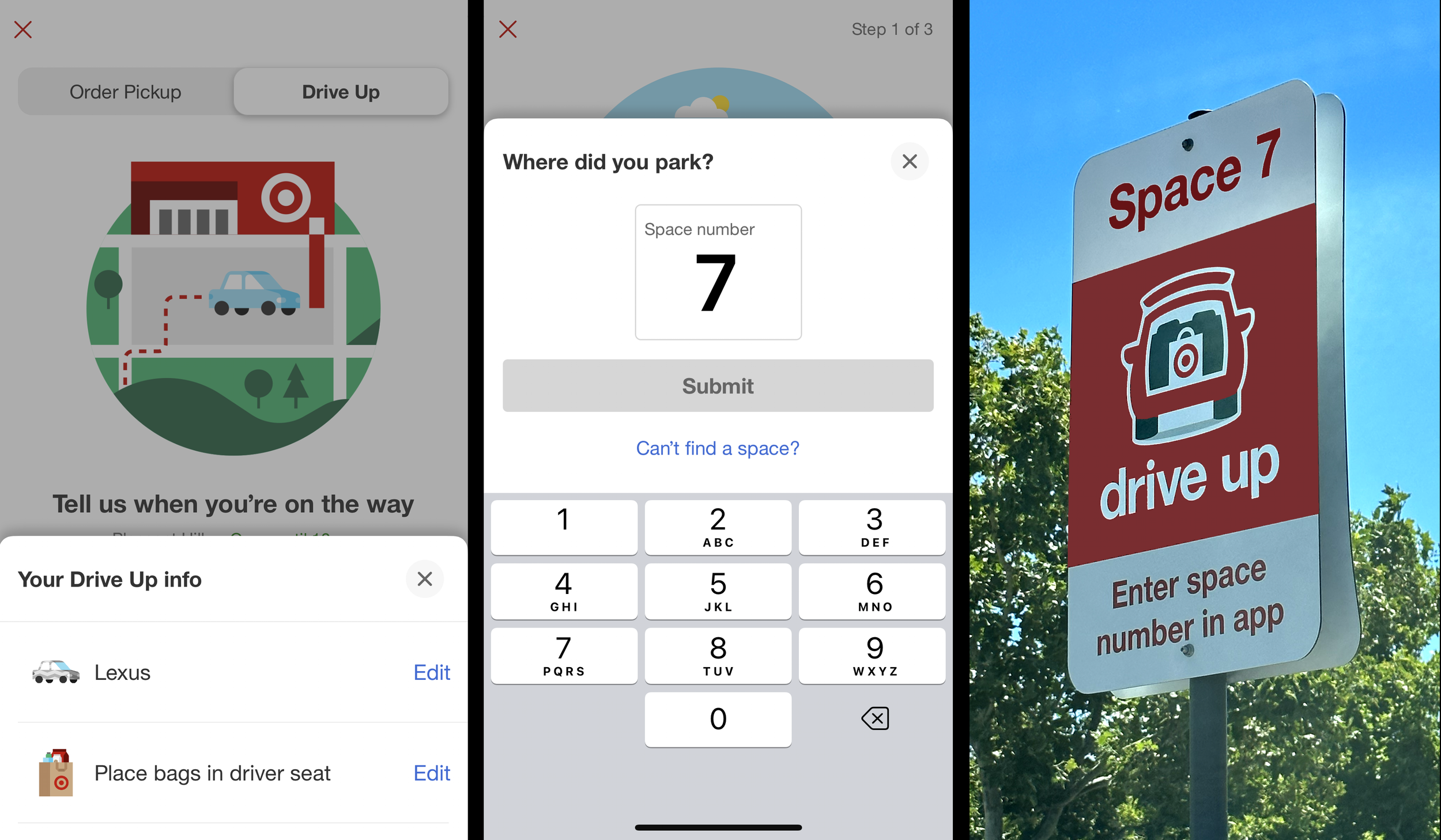As the name implies, any process that provides relevant and contextual knowledge along the way or in advance can be described as Wayknowing, especially if that information reveals conditions that allow for better decision-making.
Mapping apps already anticipate transit conditions, delays, and alternate routes based on your preferences. You can even choose options like avoiding toll roads or favoring fuel-efficient routes.
But in addition to showing optimal destination paths, app data can also reveal how busy your final location is or if it’s about to close before you can arrive. Both are relevant bits of additive information that could change your decisions on when or even if to leave. This type of predictive knowledge is a defining characteristic of Wayknowing.
Below are a few specific examples of predictive conditions.




